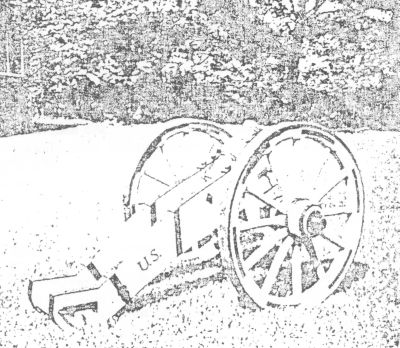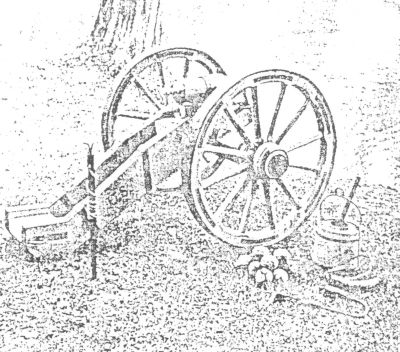
With their campaign service now behind them the howitzers seemed destined for a quiet life of garrison duty. Knox, writing General Wayne on 31 March 1794, had previously given some hint of this when he directed Wayne to "order as respectable a detachment as you can to take post at Fort Massac32 and erect a strong redoubt and block house with some suitable cannon from Ft. Washington." There is some question as to whether any of the "Flying Howitzers" were immediately sent to Massac, yet at least one of them probably put in a long "hitch" at that post, for in May of 1808 an Englishman touring America saw "On the esplanade, ... a small brass howitzer, and a brass caronade two pounder, both mounted on field carriages."33 Proceeding southward, he reached Ft. Adams34 in August where he found two more "small brass howitzers mounted 'en barbette.'"
Correspondence of February and March 179(?) reveals that eight 2 3/4" howitzers, released from the area from Ft. Washington to Defiance, were earmarked for use at the posts of Michilimackinac, Detroit, Miamis and Niagara.35 Lying scattered at various posts in 1802, a total of 39 appear on the general inventory, three more than the 1792-3 contracts specified.36 Therefore at least three pieces are of unknown origin. Were these foreign cannon of a similar nature, or were they tubes of the same pattern cast by other founders during the Revolutionary War?37
These questions , and others, regarding carriages and possible use during the War of 1812 or other wars, remain unanswered. Will the answers be found in some old journals, as yet undiscovered, in War Department records, or in some fragile papers written in the hand of Colonel Procter? Perhaps some reader may someday find the clues and be able to complete the story.


